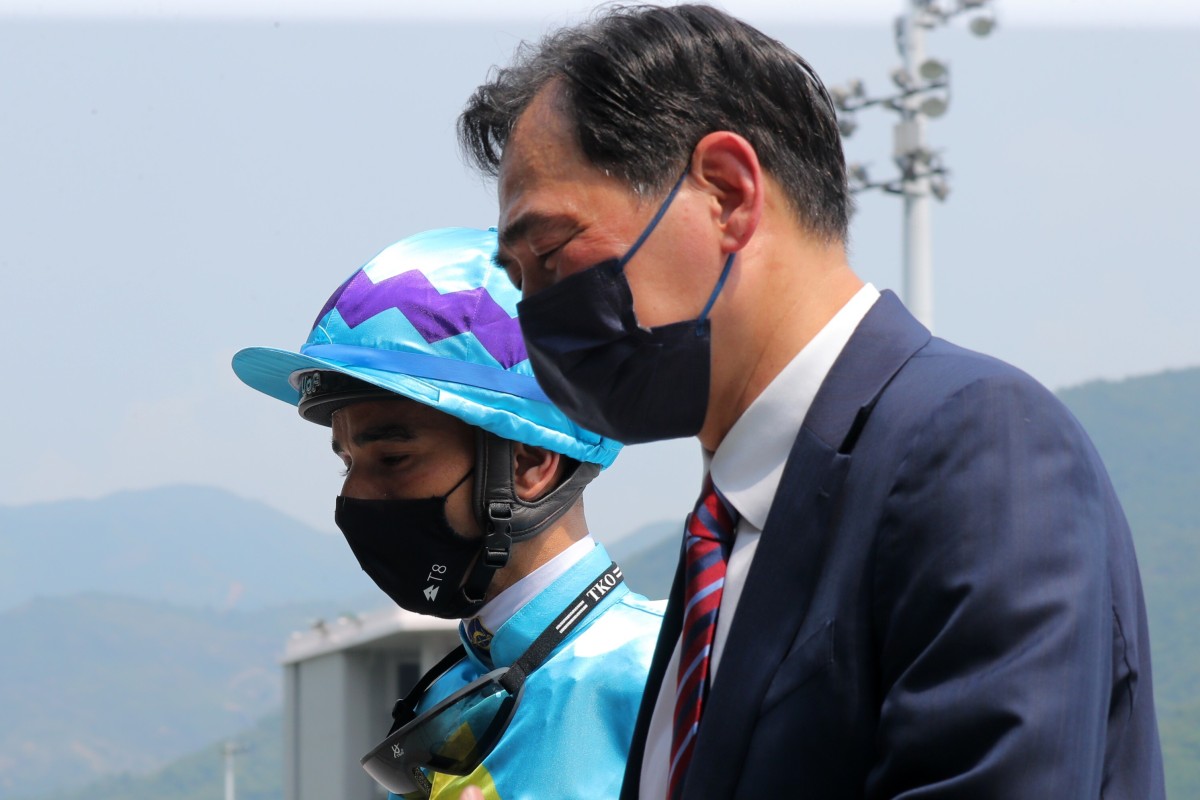While Michael Chang Chun-wai and Peter Ho Leung managed to make a very low bar look like the Great Wall of China in 2020-21, the veterans appear to have been stung into action after positive starts to the season.
It’s tremendously difficult for a Hong Kong trainer to lose his job – barring misbehaviour, it requires a sustained period of serious mediocrity – but no one wants a strike and Chang and Ho have responded accordingly after failing to meet the Jockey Club benchmark for the first time last campaign.
It’s only early, of course, but both are on the board after three meetings – including a Class Four victory each – and Chang’s double with Steel Win and Golden Four at Sha Tin on Sunday means he’s already almost a quarter of the way to matching his return of nine winners last term.
Last season it took Chang until the 350th race to record his second winner – a Family Folks success in January – but this season he did it in 22.

The laconic handler has also had a further three placings from his 11 runners so far in 2021-22, proof he’s got his horses up and about.
While Ho has only had one winner, four of his seven runners have finished in the top three and it was his galloper The Best Hero charging home into second behind Steel Win on the weekend.
So, early as it may be, there is cause for optimism for a pair who are among those likely to be impacted most by tweaks to the trainers’ benchmark.
While before it was simply 16 winners for single-site trainers or 18 for those with a Conghua base – as well as an exemption if you hit a certain level of prize money – this season only two of a trainer’s winners can come from Class Five and there’s no prize money clause, which saved Ho in 2019-20.
Top ride, top win! Steel Win narrowly scores in the season's first dirt race under Joao Moreira. #HKracing pic.twitter.com/okVhMQIY7v
— HKJC Racing (@HKJC_Racing) September 12, 2021
As it stands, the four trainers who finished in the bottom four places last season have the fewest horses in their stables: Ho with 30, Chang with 33, David Ferraris on 28 and Richard Gibson with 42.
While only three of Gibson’s string currently reside in Class Five, the other three have a rather alarming percentage of their gallopers stuck in the cellar grade.
New beginnings for Alfred Chan, securing first victories as a freelance rider
As none of the trio has a Conghua base, they need to produce 87.5 per cent of their winners (14 of 16) in Class Four or higher.
That means Chang needs 87.5 per cent of his victories from 72 per cent of his horses, while the percentages are similar for Ho (73) and Ferraris (75) – the latter whom would have received a strike last season if the new rules were in place and is yet to get off the mark this term.
The Jockey Club has tightened the screws, however slightly, and it’s now more important than ever for those at the bottom of the trainers’ table to attract talented new gallopers who can go up in the ratings rather than down. For Chang and Ho, a continuation of this bright start can only help that cause.

Healthy Wealthy on Group path
A week after unveiling potential superstar Nervous Witness and setting his sights on the Hong Kong Sprint with Naboo Attack, David Hayes believes he may have another speedster who can mix it with the best.
Super Wealthy’s victory in the Class Two Choi Hung Handicap (1,000m), where he was so relaxed under Blake Shinn in the run before savaging the line, has the in-form Hayes eyeing off the Group Three National Day Cup (1,000m) on October 1, a race he hopes is a precursor to bigger and better things.
“The time was pretty good, 55.70 [seconds] – nearly as fast as Nervous Witness so it’s not a bad effort,” said Hayes of Super Wealthy, who actually bettered Nervous Witness’ debut effort of 55.71 however Zac Purton didn’t move on the latter in what was essentially a track gallop.
That's FOUR! There's no stopping @blake_shinn as he racks a quartet atop Super Wealthy. #HKracing pic.twitter.com/anFjIcp3a1
— HKJC Racing (@HKJC_Racing) September 12, 2021
“Douglas [Whyte] always had a very high opinion of the horse. He had immature knees, touch wood he’s very sound at the moment and hopefully we can keep him [sound] and get him into the premier sprints.”
Super Wealthy was having his first start for Hayes after three wins from 11 outings for Whyte, all over 1,200m or further.
Hayes opted for the 1,000m to counter the galloper’s tendency to over-race but believes he can get the six-year-old to travel kindly at six furlongs.
“The key is if he stays relaxed he’ll go up a notch or two. I think if we go one more 1,000m and then 1,200m and then just keep him at that distance, I reckon he’s pretty good,” he said.





















